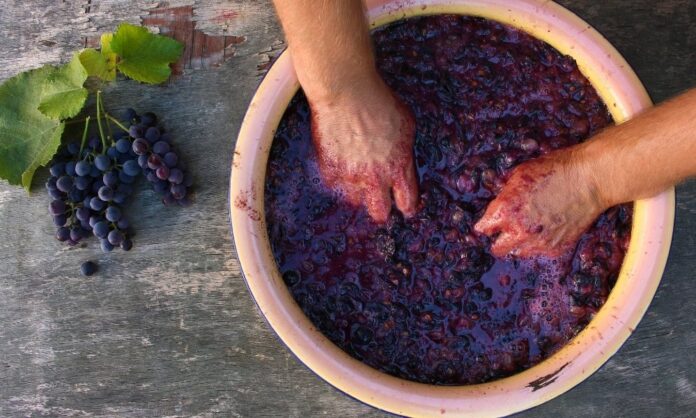
How to make wine at home? Find out in the article the necessary tools and the 10 simple steps to make wine at home. You will find information on how to make red wine, how to make white wine. To learn more and get more information on how to make wine at home, also discover the article dedicated to white and red winemaking and how to make rosé wine.
INDEX:
TOOLS for making wine at home
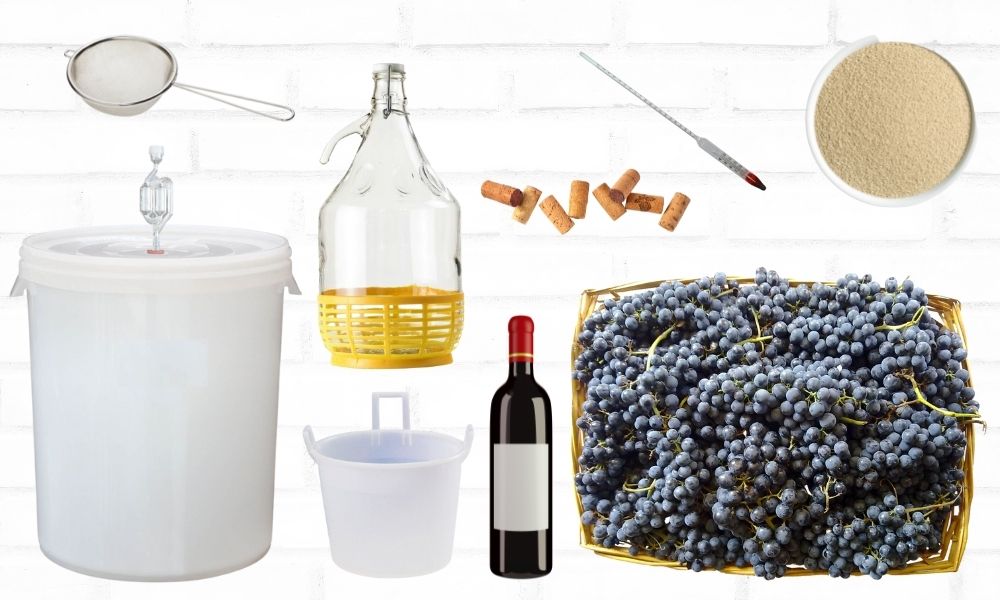
- White or red grapes
- Large container (fermenter) in food steel or plastic.
- Active dry yeasts (fermentation starter)
- Sieve
- Secchi or Mastelle
- Mostimeter
- Glass demijohns
- Glass bottles and caps
HOW TO MAKE WINE AT HOME IN 10 STEPS
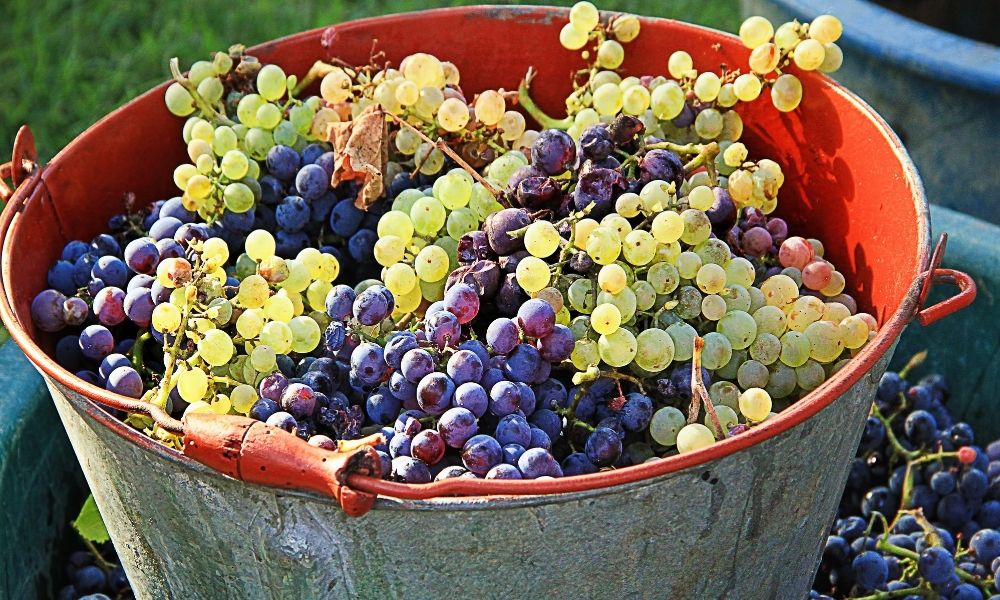
How to make wine at home? Now that we have found the tools, let’s discover the steps to make wine at home. You will also find step-by-step information on how to make homemade white or red wine and how to make wine without sulphites.
For more information on how to make wine at home, also discover the article dedicated to red winemaking, white winemaking and rosé winemaking.
HOW TO MAKE WINE AT HOME – STEPS
1. CHOICE OF GRAPES
2. CRUSHING or SHAKING
3. TRANSPORT IN THE FERMENTER
4. CHOICE OF YEASTS + FERMENTATION ACTIVANTS
5. ALCOHOLIC FERMENTATION
6. REFITTING
7. MUST SUGAR MEASUREMENT
8. DRAWING
9. TRANSFERS
10. BOTTLING
STEP 1: CHOICE OF THE GRAPES
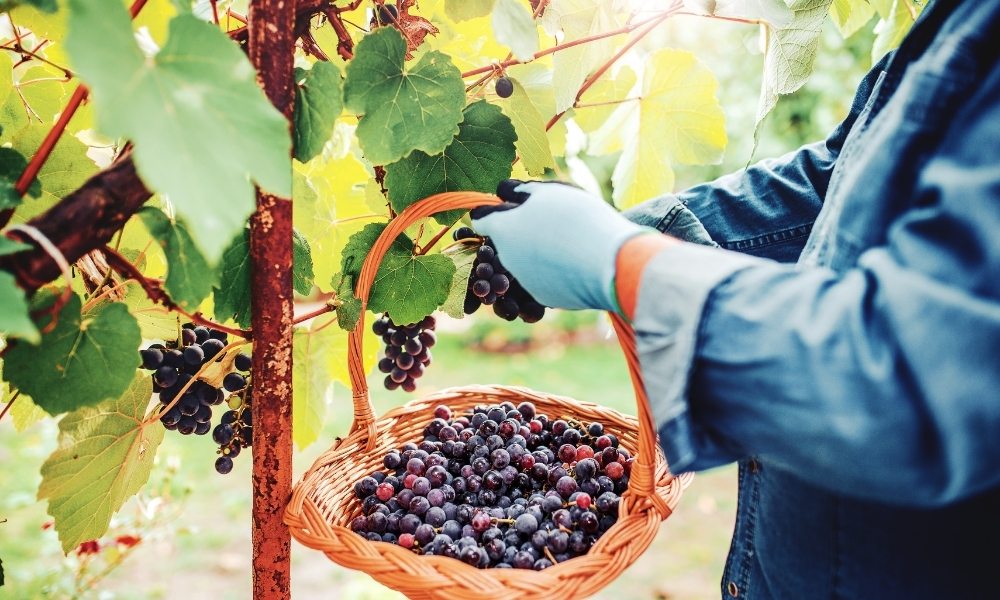
How to make wine at home? The state of health and ripeness of the grapes is the factor that most influences the quality of home-made and non-home-made wine.
First of all, you need to choose white or red grapes depending on the homemade wine you want to get. Once the grapes have been chosen, the bunches must be carefully selected, avoiding damaged and green grapes and eliminating leaves and stalks.
STEP 2 : PRESSING
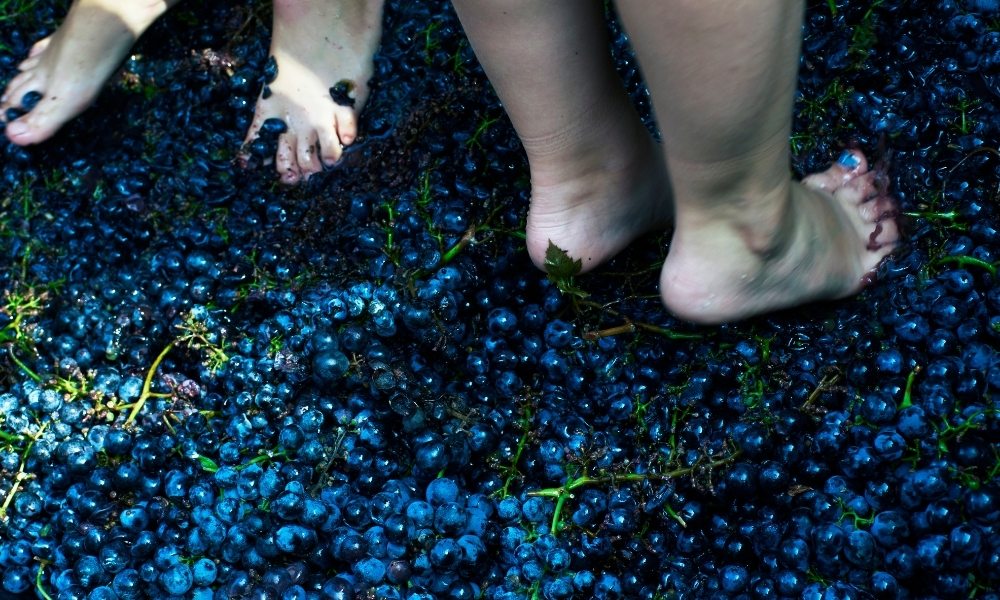
The second step in making wine at home consists in pressing. This operation, which is carried out with a crusher, can also be carried out comfortably by hand if the quantity of grapes is not excessive.
The resulting liquid is the must, the primary basis of the fermentation process of our homemade wine.
STEP 3: TRANSPORT IN THE FERMENTER
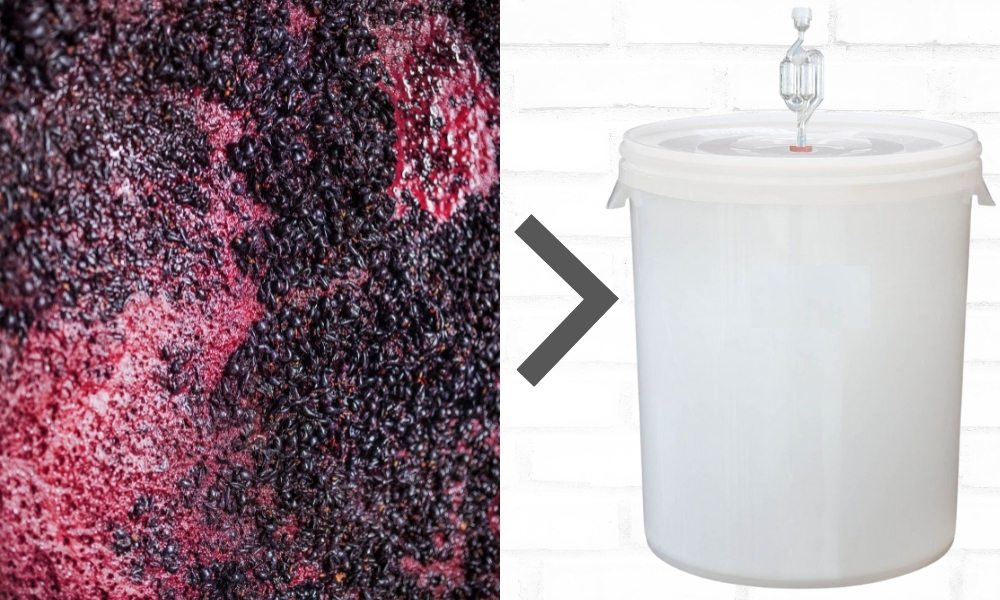
The third step in making wine at home consists in transporting the must inside a food container (FERMENTER). This operation must be quick and delicate.
Red wines are obtained by maceration of the solid parts (skins, seeds and any stalks) in the must. In white wines, the skins are isolated and removed by racking. The skins are then pressed and the liquid is added back to the must.
STEP 4: CHOICE OF YEASTS + FERMENTATION ACTIVANTS
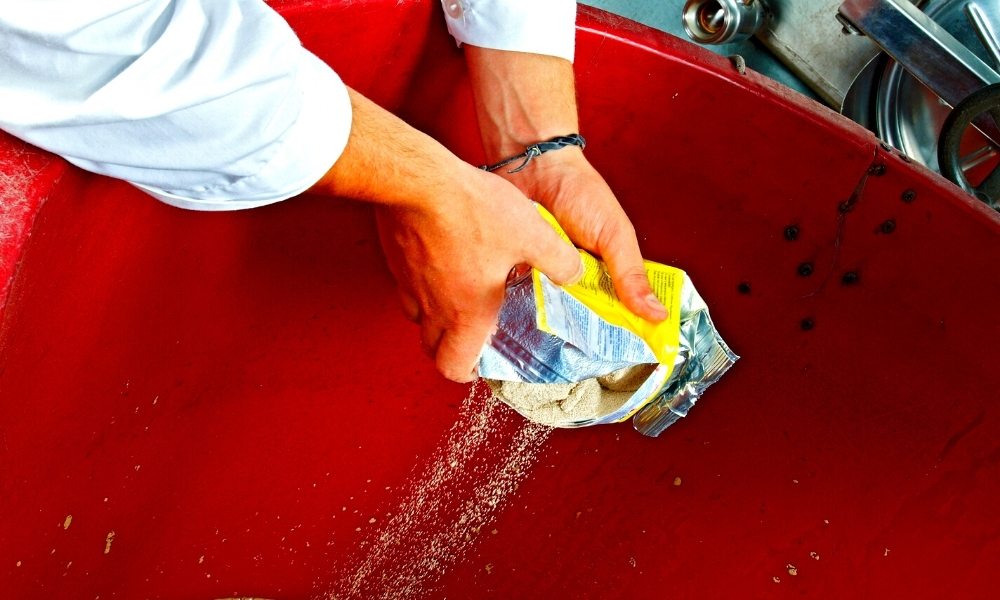
The choice of yeasts is a fundamental phase for making wine at home. Depending on the yeasts (and not only), the fermentation speed will vary and will also affect the development of odors developed during this process. The choice of yeasts is therefore a step of fundamental importance to make a quality homemade wine.
On the market there are active dry yeasts (LSA) based on Saccharomyces Cerevisiae, ideal for the winemaking process. This choice is optional: grapes already have a large amount of these yeasts on the skin and fermentation could therefore start spontaneously.
However, to obtain a healthy spontaneous fermentation it is necessary to carry out a strict cleaning of the winemaking environment (fermenter and external environment), in order to avoid competition between unwanted microorganisms present in the environment and those useful for fermentation, naturally present on the grape skin. This choice for making wine at home is certainly less controllable than fermentation started with active dry yeasts.
Furthermore, by adding nitrogen and fermentation activators, available on the market, in this phase, the metabolism of yeasts is optimized.
STEP 5: FERMENTATION
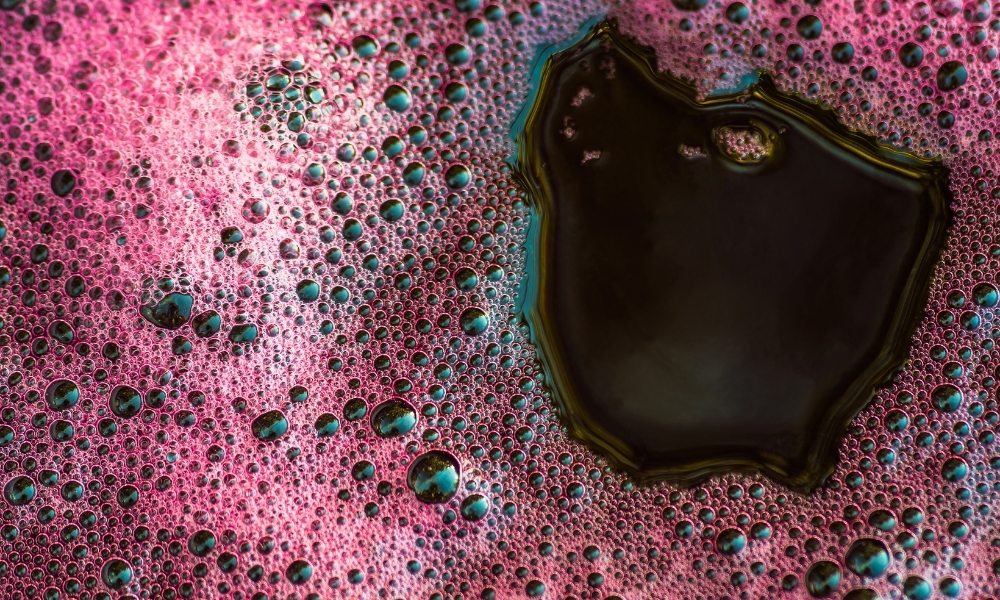
Let’s see a fundamental step to make wine at home. Alcoholic fermentation includes an initial phase of 1-2 days, a tumultuous phase of 7-10 days and a slow phase that continues until the sugar residues are completely transformed and the acidity of the wine decreases.
Bound
During this process, the sugars in homemade wine, naturally contained in grapes, are transformed into alcohol and carbon dioxide under the action of wine yeasts.
The development of this gas, in the case of homemade red wines, pushes the solid parts upwards, forming the cap of marc, which must be periodically mixed with the must with a fuller.
As for homemade red wines, the optimal fermentation temperature ranges between 24-30 ° C, while for homemade white wines it is 18-21 ° C. Temperature control can be carried out by pumping over (which cool the must) or by using a heat source close to the container in the event that temperatures drop below the desired range.
NB: during fermentation, the container must be closed with a lid but not hermetically, in order to avoid the accumulation of gas inside the wine vessel.
STEP 6 : PUMPING OVER
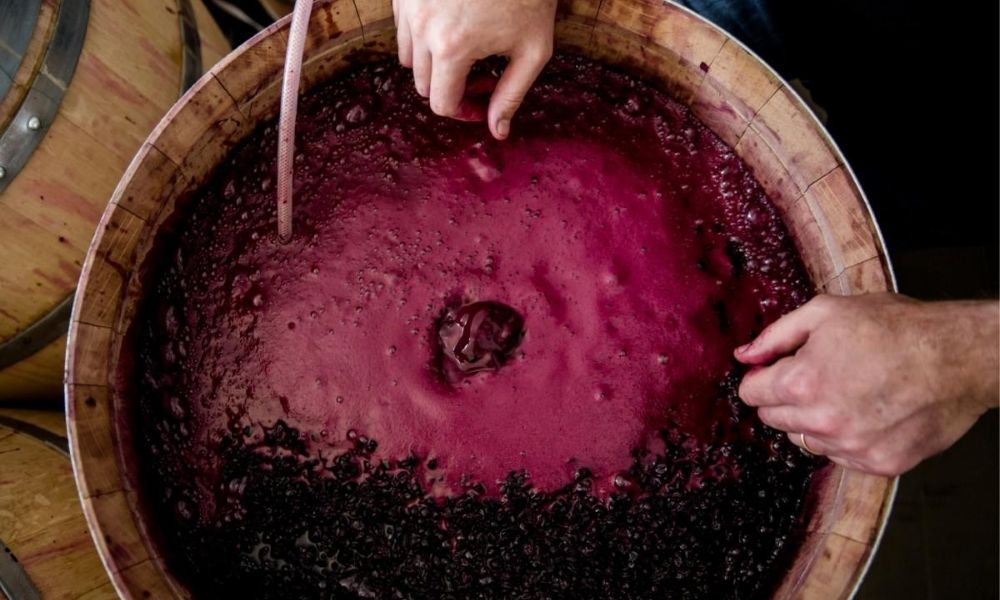
Let’s see the sixth step to make wine at home.
This operation is carried out several times a day depending on the temperatures and the degree of oxygenation of the wine, both to provide our homemade wine with the right amount of oxygen essential for the fermenting yeasts, and to lower the temperatures of the must.
It can be done through the use of carefully sanitized buckets or with a bubbler if present on our fermenter.
STEP 7: SUGAR MEASUREMENT IN THE MUST
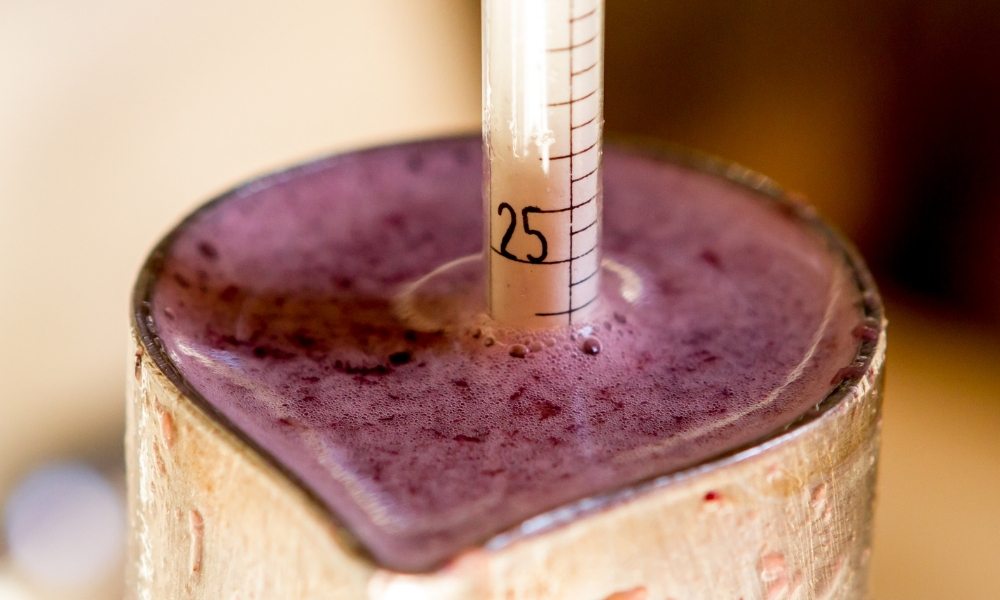
To make wine at home it will therefore be necessary to make sure that the fermentation is completed. As mentioned earlier, yeasts turn sugars into alcohol as long as they are there. The end of the presence of sugars will therefore indicate the end of fermentation.
The sugars can be calculated simply with a mostimeter, which in addition to the quantity of sugars present will provide us with valuable information on the potential alcohol of our homemade wine.
STEP 8 : DRAWING
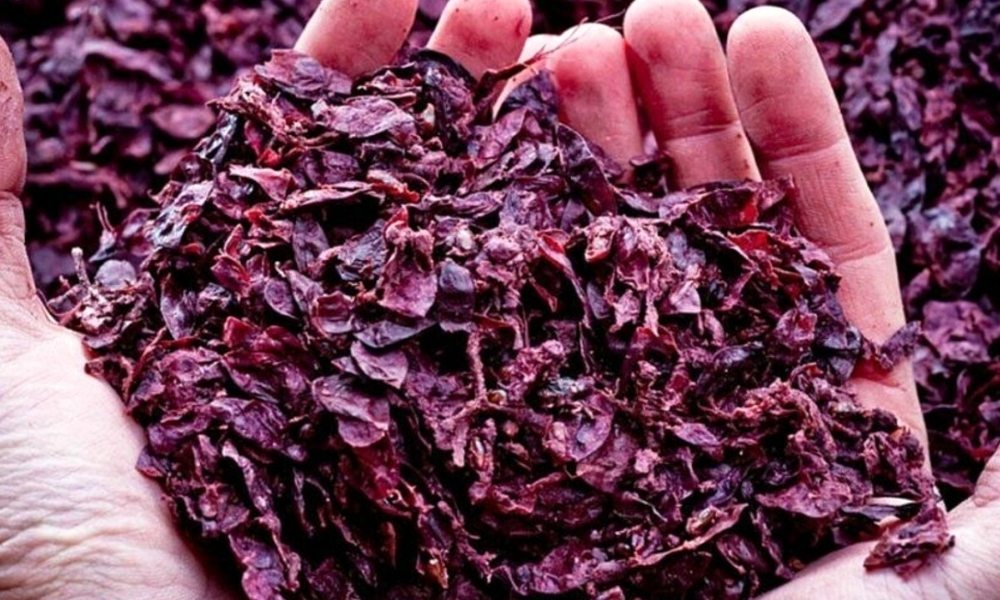
How to make house wine? The eighth step to make wine at home consists in racking. At the end of the alcoholic fermentation, the must, which has now become wine, must be drawn off. You can use glass demijohns with a special sieve to divide the liquid phase from the solid one.
The pomace will be transported to the press while the wine, now in the demijohn, will continue its slow fermentation phase.
The demijohns are an excellent container for homemade wine and special plastic caps are available that allow the fermentation gases to escape from the demijohn without the entry of oxygen.
STEP 9 : TRANSFERS
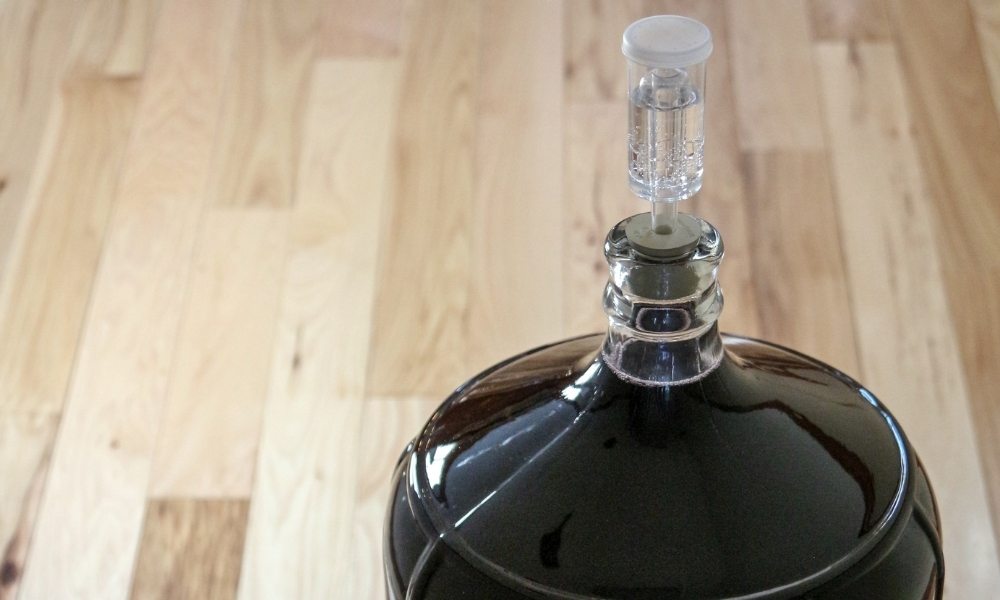
How to make wine at home? The penultimate step in making wine at home is to let the wine rest in a demijohn. The wine will continue the refinement process by itself, and decanting must be carried out (every 20-30 days) in order to eliminate the deposits accumulated on the bottom of the demijohns.
The decanting consists in moving the mass into other demijohns and we can do it directly with a funnel or with a bubbler if our container has one.
In this process it is essential not to move the wine too much to prevent the residue present on the bottom from returning to liquid suspension.
STEP 10: BOTTLING
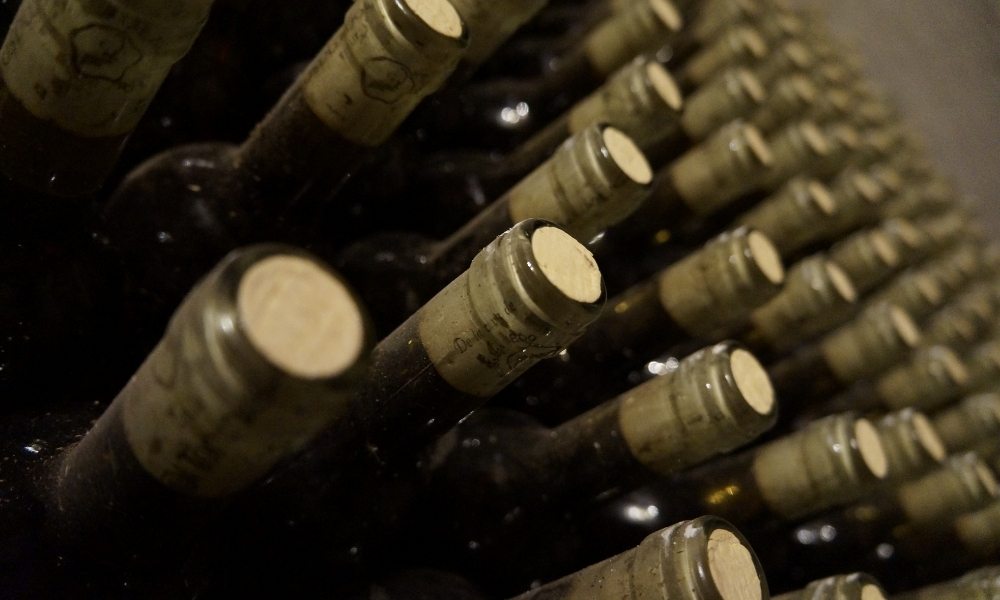
Let’s see the last step in making home wine. At the end of spring, after a long period (and a series of tastings, why not!) It is time to transfer our homemade wine to the final container. Choose clean glass bottles and suitable caps, which can be cork or more simply plastic screw caps.
Before bottling you can decide whether or not to add sulfur to avoid any unwanted refermentations in the bottle and to have greater stability of the homemade wine: this step is to be omitted if you want to make a homemade wine without sulphites.
Now put the bottles to rest in a cool and dark environment and let the homemade wine mature for a few months or even years: wine is a multifaceted and constantly evolving nectar and needs time to mature.
Now your homemade wine is ready to be drunk. Taste it, the result will surprise you!
HOW TO MAKE WINE AT HOME?

How to make wine at home? Making wine at home is therefore not impossible, just keep in mind the fundamental concepts of winemaking: optimal temperatures and cleanliness of the rooms.
This guide also recommends simplifying the basic concepts of winemaking in order to thrill those wondering how to make homemade wine.
Your homemade wine can thus be a respectable product, to be drunk within the year in the case of white wines or even after some time in the case of homemade red wines.
Write us if you have any questions about how to make wine!
Cheers, Salute, Santé!






